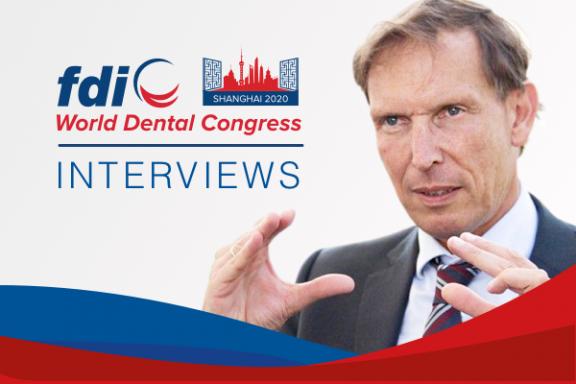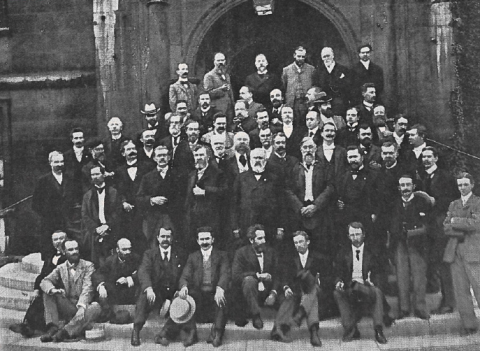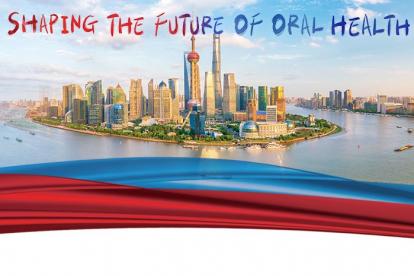Exploring modern all-ceramics: Interview with Dr Daniel Edelhoff

As an established expert in the field of prosthodontics, Dr Daniel Edelhoff will share the latest advancements in his field at the FDI World Dental Congress in Shanghai in September. His first lecture will detail innovative pre-treatment options for complex rehabilitations. His second lecture will discuss the advances in fixed prosthodontics using a broad spectrum of ceramic types.
In Shanghai, you’ll discuss innovative pre-treatment options for complex rehabilitations. How do digital technologies offer access to more diagnostic information and enable a higher predictability?
Predictable aesthetics and function in patients with complex rehabilitations require clinical and technical teamwork between the dentist and dental technician. Digital technology enriches this teamwork through innovative diagnostic options supported by digital impressions, 3D face scanning, digital facebows, as well as digital registration of dynamic occlusion. This means that the “digital patient” is available around the clock in the dental laboratory, which is an important prerequisite for the virtual wax-up.
Access to new CAD/CAM polymers, like tooth-colored removable splints and high-density polymer restorations, offers new treatment options for long-term temporary restorations and allows the practitioner to explore and test-drive the final treatment goal in a non- or minimally invasive way.
You’ll also give an overview of the changes in treatment concepts in fixed prosthodontics due to the spectrum of ceramics available today. How have these changes affected the professional life of dental practitioners?
The development of dental ceramics, following the introduction of the first all-ceramic crown by John W. McLean, includes many important milestones. Not all of the first glass-ceramic systems showed a high, long-term clinical reliability. However, with the introduction of lithium (di)silicate, scientists could finally identify a very satisfying long-term survival rate for tooth-colored, single-tooth restorations like anterior and posterior full crowns, partial coverage restorations, veneers, and occlucal onlays. What’s more, oxide ceramics have experienced very significant development through the introduction of high-strength zirconia materials. Initially, zirconia ceramic represented one main material type; later, “zirconia” became a term for a whole family of materials, covering a high diversity of restorations, from implants and implant abutments, to over-crowns and fixed dental prostheses (FDPs), to cantilevered, resin-bonded FDPs. For many of these indications, promising and clinical long-term data are available today.
Modern all-ceramics have become an important part of the daily treatment concept of dental practitioners all over the world.
As you reflect on your career in prosthodontics, what kinds of changes or evolutions have you been most struck by?
The treatment concepts in fixed prosthodontics have significantly changed over the last decades.
Three main developments have strongly influenced these changes: Firstly, minimally invasive options have become increasingly feasible, due to the introduction of reliable adhesive techniques in combination with restorative materials with translucent properties similar to those of natural teeth. Mechanical anchoring of restorations via conventional cementation as a predominantly subtractive treatment approach is gradually being superseded by a primarily defect-oriented additive method. Secondly, modifications of conventional treatment procedures have led to the development of an economical approach regarding the removal of healthy tooth structure. After the planned treatment outcome is defined in an initial wax-up, the treatment begins and this wax-up is subsequently used as a reference during tooth preparation. Thirdly, high-strength lithium (di)silicate and novel zirconium oxide ceramics have been introduced, which has opened up an expanded range of indications like cantilevered, resin-bonded FDPs and demonstrates reliable, long-term clinical results.
Are your lectures geared only toward prosthodontists, or do you think other specialists might also find value in attending?
My lectures will show complex rehabilitations based on interdisciplinary approaches including orthodontics, operative dentistry, endodontics, and orthognathic surgery.
Find out more...
The World Dental Congress (WDC) is a flagship event for FDI, strengthening ties and fostering collaboration within the global oral health community.


